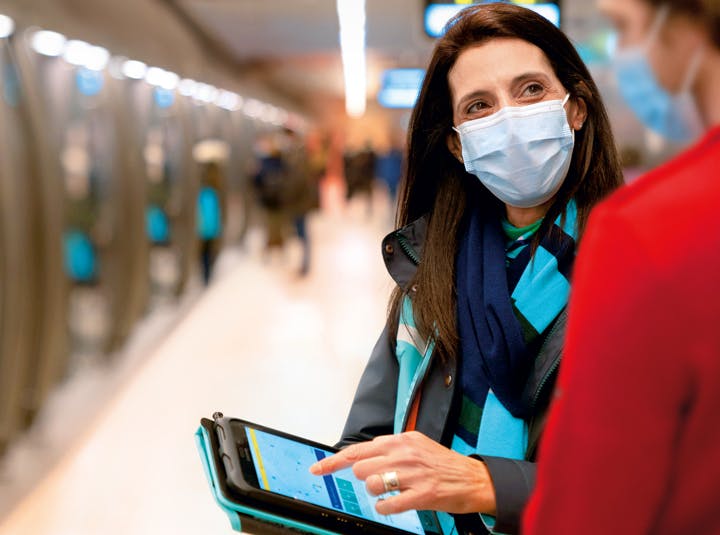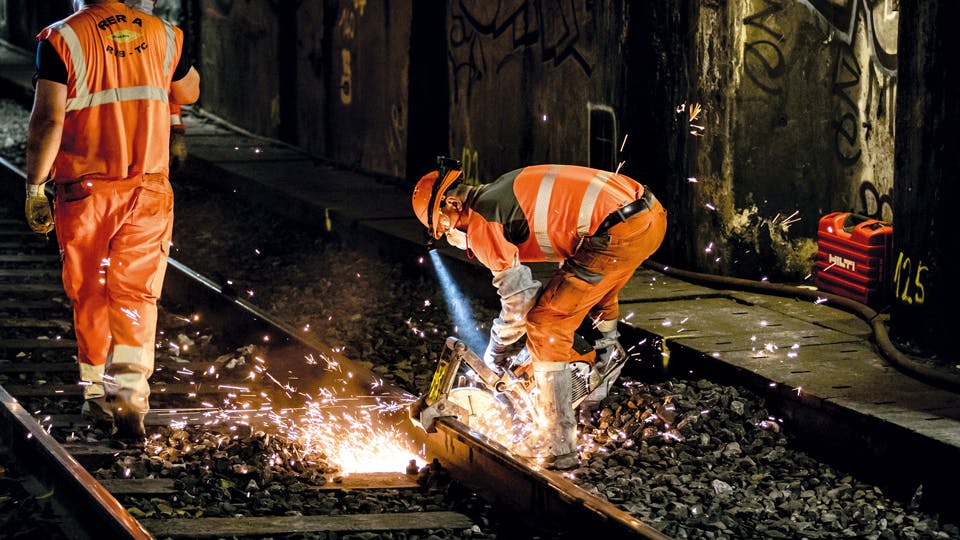NEW ON-BOARD COMFORT
Changing daily life in the city also means renewing the buses, trains and trams used every day by millions of customers. Delivery of new rolling stock, which will provide cleaner mobility and a better passenger experience, continued at a steady pace in 2021, with the financial support of Île‑de‑France Mobilités and the European Union. As part of the Bus2025 plan, the commissioning of over 1,000 electric and biomethane buses has enabled the fleet to cross the milestone of 45% clean buses, while the energy conversion of bus depots is continuing: work at 8 bus depots has been completed and conversion work is under way on a further 8. Metro line 14, meanwhile, is gradually being equipped with a new fleet of 8‑carriage trains. The contract for new RER line B trains has been launched. This will soon be followed by the future MF19 trains and new trams for line T1. With higher capacity than their predecessors and equipped with digital information displays, USB sockets and LED lighting under the seats to enhance the journey environment, they will improve the passenger experience quality.
CONTINUOUS IMPROVEMENT, A TEST OF ENDURANCE
Improving service quality also takes place on a daily basis and behind the scenes. Initiated in 2017, the Group’s operational excellence programme concerns all aspects of operations, maintenance and support functions. And it is bearing fruit. Process standardisation and coordination between operational requirements (offering the right number of trains at peak hours) and maintenance requirements (safety compliance with the train maintenance programme) were recognised in 2021 with 5-star EFQM certification for RER line A. Another example is the upgrade of the RER maintenance workshop in Sucy‑en‑Brie, where application of standards from the world of industry will make it possible to absorb the increase in scale of the network. Completely reconfigured and digitised, the workshop has doubled its production capacity, with the commissioning of a continuous-flow line to service bogies, which are key components of the train. It will thus be able to handle the increased number of trains and mileage on the RER network.









